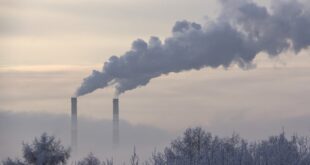In the past 20 years. China has become a key player for global greenhouse gas emissions. Due to its large population. rapid economic development launched it into position as the top-emitting nation. despite having per-capita emissions that are about half those of the United States. Many Western countries have had roughly stable emissions levels. but China`s have still been rising. This means that China`s future trajectory will have a huge influence on the global trajectory.
China`s pledge. submitted as part of the international 2015 Paris Agreement. was to ensure its emissions peaked and stabilized before the end of the deal’s window in 2030. This is no small feat considering that the country`s emissions had more than doubled in the last 10 years or so.
Of course. that could include everything from a 2016 peak to a 2029 peak. and a lot of effort has gone into analyzing emissions trends in Chinese industry and electrical generation. As of 2015. some slowing economic growth and government directives were already combining to mark a shift in China`s emissions trend. Some studies have found that China may. in fact. be very close to peak emissions already thanks to transitions toward cleaner industries and renewable energy.
A new study led by Haikun Wang. Xi Lu. and Yu Deng doesn`t look directly at industry or the grid. Instead. it examines the relationship between economic growth and emissions to project that China`s should peak in the early 2020s.
City by city
The analysis uses data from 50 Chinese cities for a representative sampling of the factors at work across the country. The cities combine to account for about 35% of national emissions. 30% of the population. and 50% of total gross domestic product (GDP).
These cities vary widely. from types of industry to affluence to sources of power on the local grid. But the researchers see evidence that these metropolises follow an economic relationship known as the environmental Kuznets curve emissions per capita stops increasing once a certain GDP per capita is reached. The idea is basically that dirty growth eventually provides the resources to switch to cleaner options.
After adjusting for things like location (whether a city`s electricity is supplied mainly by coal or by nuclear and renewables) and the population density of cities of different sizes. the researchers calculated that emissions reach a peak when per-capita emissions hit about 10 tons of CO2 per year. That happens at an average per-capita GDP of US$21.000.
When China signed the Paris Agreement in 2015. it was at an average of about 7.5 tons of CO2 per person per year and a per-capita GDP of $13.500. Based on World Bank economic projections. the researchers calculate China should hit $21.000—and so peak emissions—between 2021 and 2025.
That would equate to peak national emissions of 13-16 billion tons of CO2 per year. compared to emissions of roughly 10 billion tons of CO2 in 2015. (For context. the United States is emitting around 5.5 billion tons of CO2 each year with a little less than a quarter of China`s population.)
It could be even better
Of course. the researchers note there is much China could do to beat these numbers. The design and infrastructure of growing cities can lead to lower or higher emissions from its citizens. for example.
They write:
Many Chinese cities (for example. Beijing. Xi`an. Hangzhou) are relatively mature. and policies of such cities should focus more on how to improve energy efficiency (for example. in existing buildings) and how to change the emission trajectories rather than their initial carbon-intensive infrastructure endowments. Emerging cities (for example. Xiong`an) and the new urban areas around old cities. which are currently expanding their infrastructures. however. may have opportunities to leapfrog and bypass carbon-intensive growth.
At the very least. signs are encouraging that China will beat a pessimistic reading of its peak-by-2030 pledge. Next year. nations will gather for the first post-Paris negotiations. where they are expected to build on their initial pledges. Based on this outlook. China may feel comfortable promising significantly more than it did in 2015.
 Iran Energy News Oil, Gas, Petrochemical and Energy Field Specialized Channel
Iran Energy News Oil, Gas, Petrochemical and Energy Field Specialized Channel




